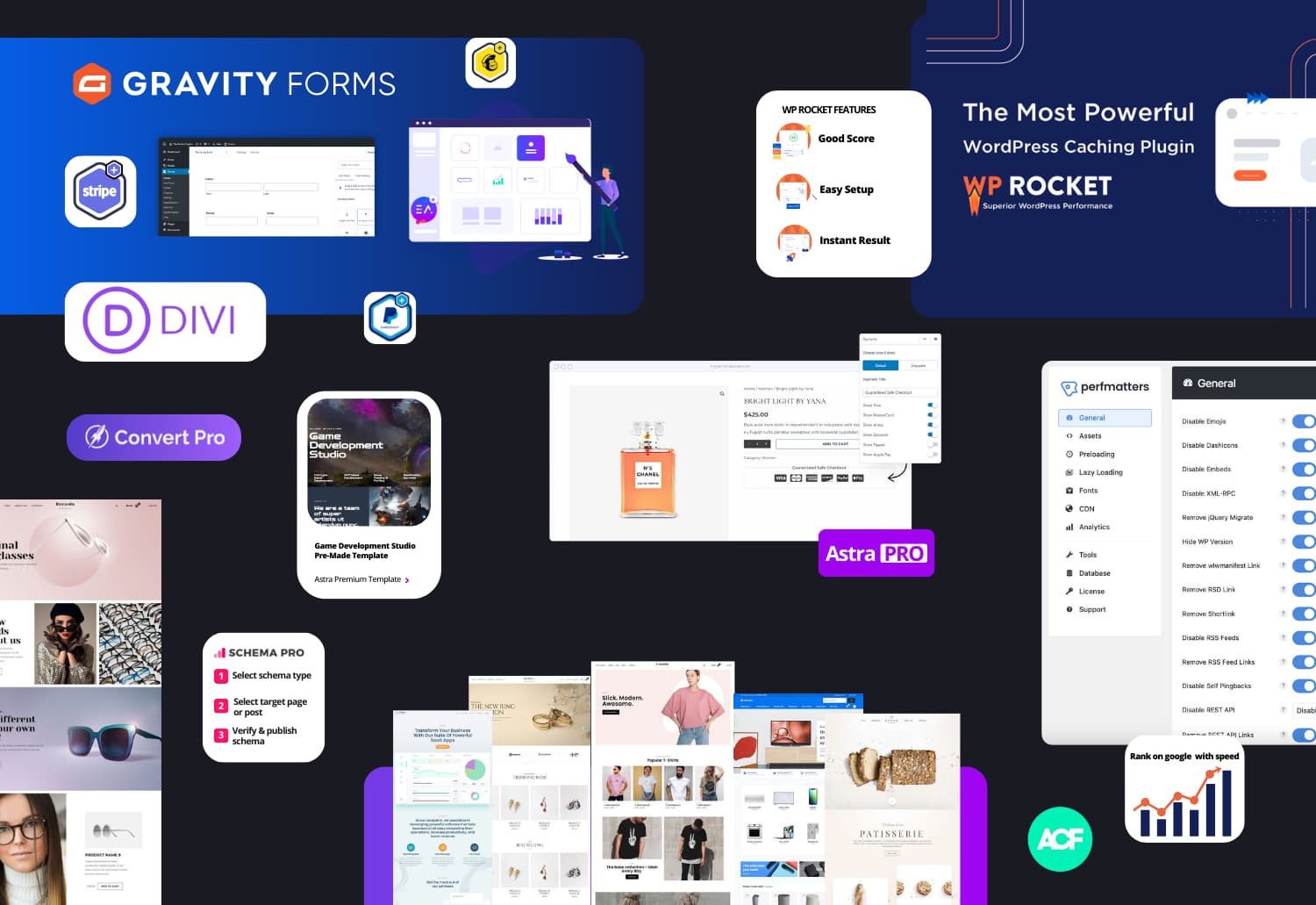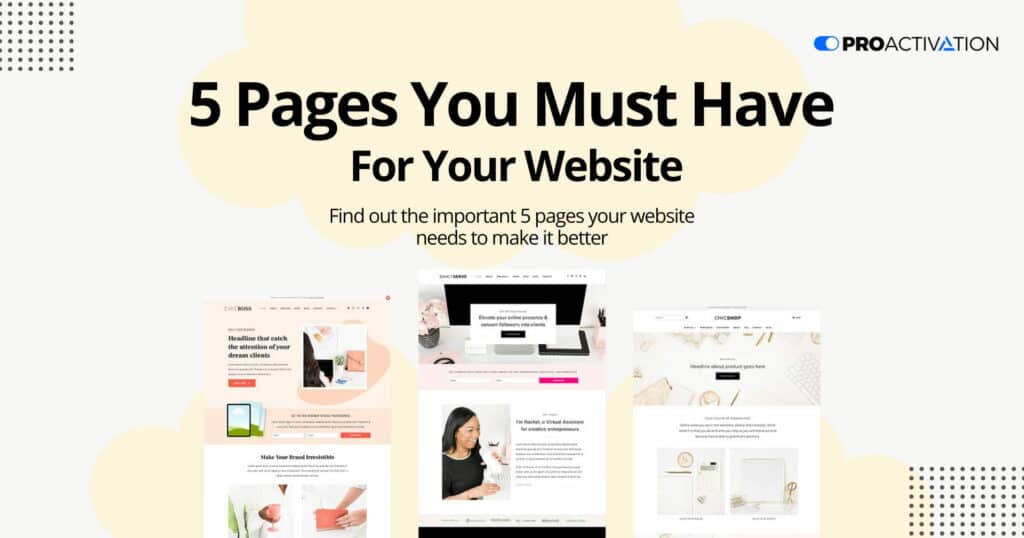So, You want to know what are the five pages you must have on your website right?
As you know, your business relies on your website. Without it, you risk losing potential customers and revenue opportunities.
Regardless of whether you’re selling jewelry or offering counseling services, your website needs to convey a compelling narrative about your identity, how you can assist visitors, the services you provide, and how people can reach you. This virtual introduction provides a sense of assurance to visitors.
5 Must Have Pages Every Website.
Do you have them all? Read below.
1. Homepage
The homepage plays a crucial role on your website. It’s the first thing visitors encounter, influencing whether they explore further or leave.
When designing your homepage, put yourself in the shoes of your customers. From navigation bars to images to the words you use, you shape the initial impression visitors get.
Your homepage should quickly communicate its purpose. Make sure your logo is visible, accompanied by a clear call-to-action button.
CarMax does this well, using straightforward text and a clear header image. Both new visitors and regular customers find it easy to navigate.
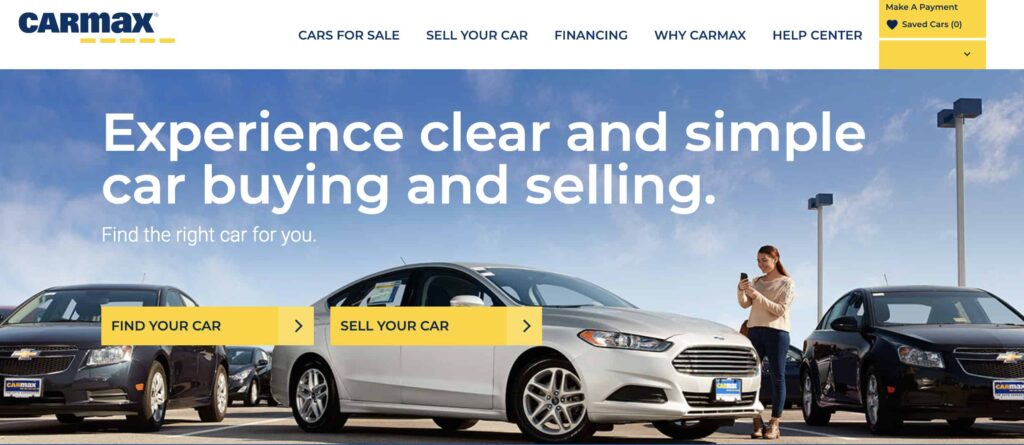
However, every website must have a homepage. But, don’t overcrowd your homepage with too many unrelated images, and steer clear of overly bold color schemes. Portray your small business effectively by opting for a simple design.
Whether you’re building a new site or revamping an existing one, seek feedback from potential visitors. Conducting a small soft launch will provide valuable insights to enhance your homepage.
The goal is to make your homepage positively impact how visitors view your small business. It serves as the gateway to increasing brand awareness and securing more conversions.
2. About Page
The About page is the most essential page for your website. It provides a chance to delve into your brand’s vision and achievements. Be clear and confident in your statements, explaining how your goals benefit customers.
Storytelling is key for this page. Your aim is for readers to connect with your brand values, join your journey, and share the message with their family and friends.
According to Prince Kapoor, a digital marketing analyst at LoginRadius, an About Us page should emotionally connect with people. If your story has impacted lives, share it proudly with the world. This kind of content humanizes your business, providing meaning and context for your product.
Rent the Runway effectively uses its About page to communicate the company’s vision and mission. It explores why the co-founders started the brand and articulate their unwavering confidence. The page concludes with an open-ended question for the reader.

Think about adjusting your About page to suit your audience’s preferences. You might consider creating it in multiple languages or ensuring it’s easily understandable, perhaps using a timeline graph.
3. Products or Services Page
The products and services page is crucial for most websites, aiming to turn a casual visitor into a regular shopper. It’s worth dedicating significant effort to enhance this page for a better customer experience.
When creating product descriptions, focus on selling the benefits rather than just listing features. Tell a compelling story that emphasizes how buyers will feel after making a purchase, aiming to make them feel connected to the product before they even receive it.
Product photography is equally important. Showcase various angles of the product and allow users to zoom in and out. If applicable, include a short video to enhance the visual experience.
Bobbi Brown Cosmetics‘ product page is a great example with its sleek, modern design. The product items are easily visible, and shoppers can clearly see the product’s star rating and price without straining their eyes.
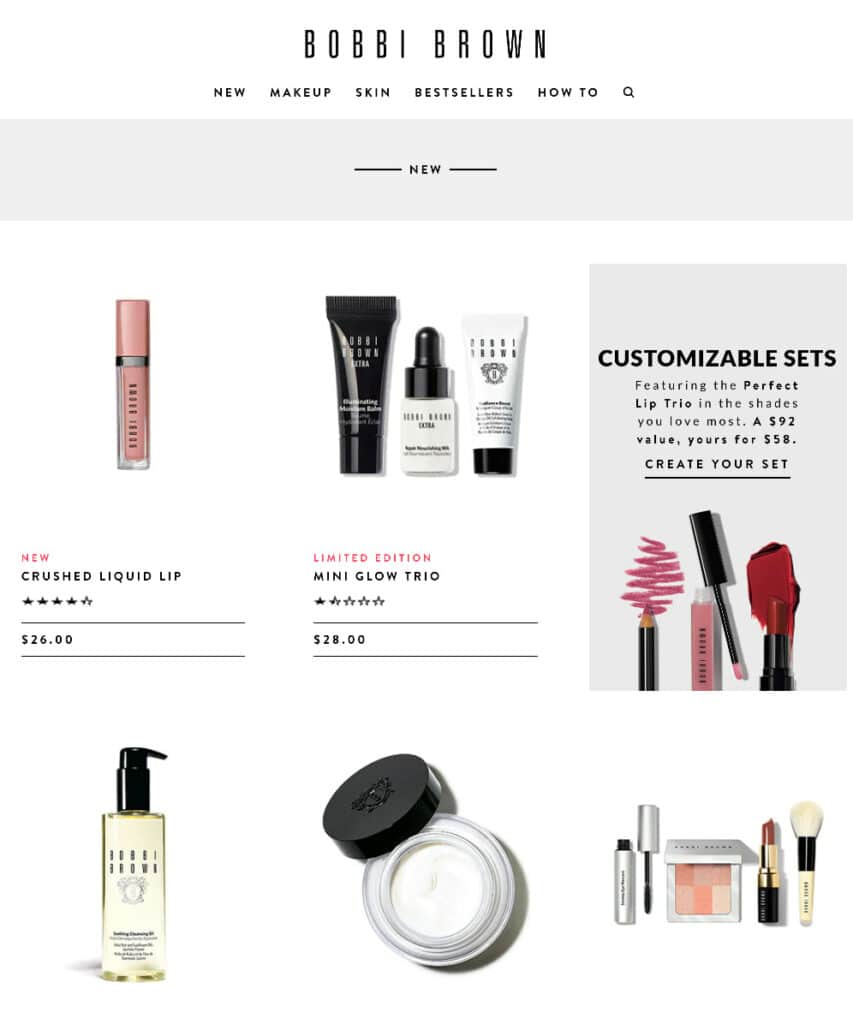
If your business offers services, provide detailed descriptions similar to product listings. Offer customers insight into how you deliver your services. For instance, a hairdresser could highlight the in-store experience, emphasizing a serene ambiance and immediate service.
4. Blog Page
A blog page enhances your website by improving SEO, engaging audiences, and establishing industry authority.
Also serves as a significant platform for your brand to directly communicate with customers. It’s an opportunity to showcase product updates, stay current with trends, and address frequently asked questions from buyers.
A successful blog is an ongoing journey, not a destination. It should grab visitors’ attention and guide them through your brand’s unique adventure. Consider offering behind-the-scenes glimpses of product design or sharing testimonial videos featuring happy customers.
According to Alyssa Gregory, an entrepreneur, writer, and marketer, your blog posts can establish your expertise in a specific subject area by consistently sharing high-quality and relevant information with your readers. Over time, you can become a trusted resource for valuable information.
The Slack blog aligns with the brand’s mission to be a collaboration hub. It features articles on product tips, work culture, and productivity, providing a true reflection of teamwork.
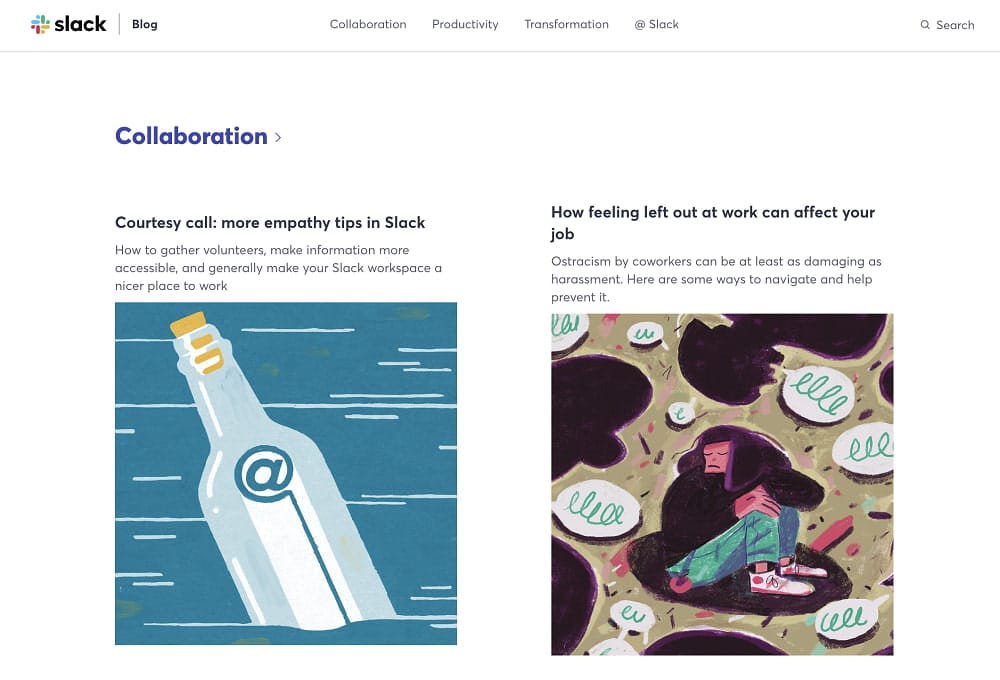
When writing your blog, avoid turning every post into a sales pitch. Constantly promoting products can irritate customers, leading them to visit your competitor’s site. Instead, focus on providing solutions and inspiring your visitors to live better.
5. Contact Page
Effective communication strengthens relationships with customers. It allows you to understand their needs and preferences regarding your products and opens the door to receiving valuable feedback.
Consider your contact page as a customer support tool. The main focus is on providing excellent service, regardless of the visitor’s reason for reaching out. The goal is to ensure customers receive accurate information.
Depending on your business type, you may share the brand’s physical address, email address, or phone number on the contact page. If you have a live chat option, make it clear that support agents are available.
Burger King’s contact page, for example, offers visitors the option to receive free food by completing a survey. Customers can also leave a message or call the fast-food chain’s headquarters.
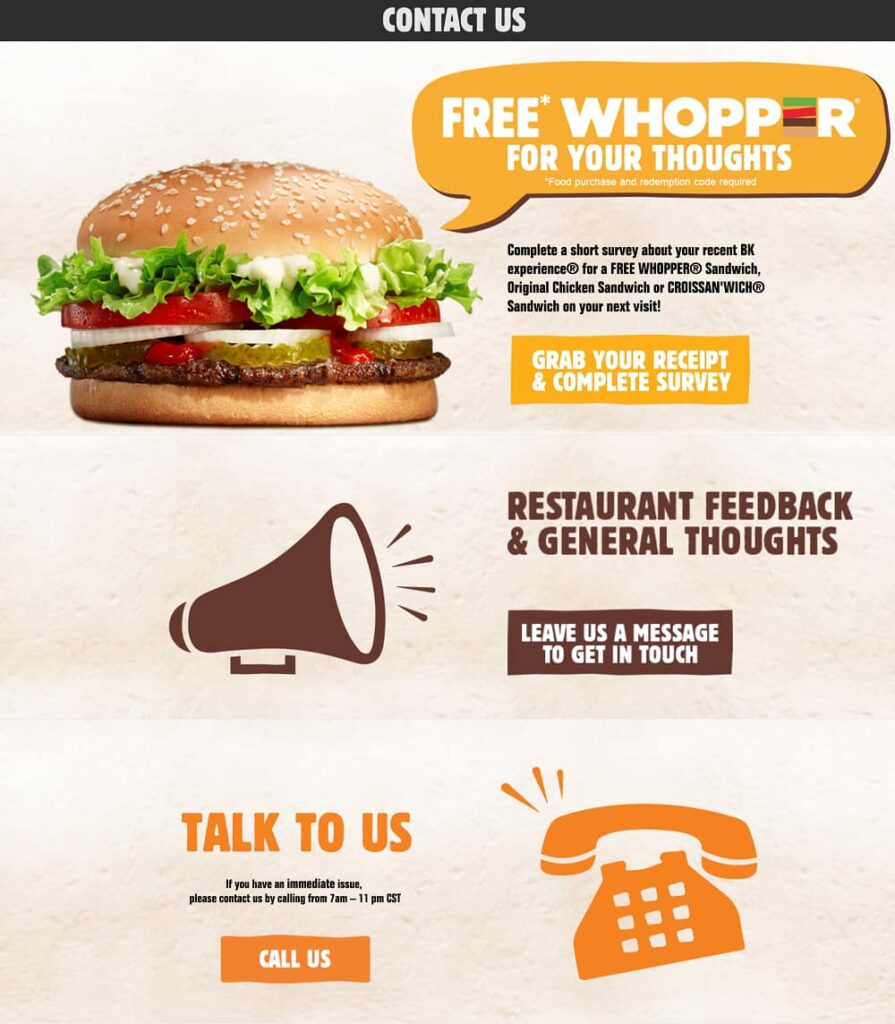
Make sure your contact page is easily reachable. You don’t want customers navigating through five different pages to get in touch with your business.
Use the contact page to manage customer expectations. Inform visitors about your response time and stick to that commitment.
Related Article: Email Marketing Mistakes: Avoid These 15 Common Errors at All Costs for Optimal Success
Wrapping Up
In conclusion, the success of your online presence hinges on the strategic implementation of these five essential pages on your website. From the impactful homepage that sets the tone for visitors to the engaging About page that humanizes your brand, each page plays a crucial role in building trust and connection with your audience.
The Products or Services page serves as the gateway to turning casual visitors into loyal customers, with storytelling and compelling visuals creating a lasting impression. A well-maintained Blog page not only showcases your expertise but also invites customers to join your brand’s ongoing journey, fostering a sense of community.
Lastly, the Contact page acts as a vital communication hub, ensuring a seamless connection with your customers. By following these guidelines and continuously refining your website’s pages, you can create a compelling online presence that not only attracts but also retains customers, ultimately leading to sustained growth and success for your business.
Unlock access to all WordPress premium products
